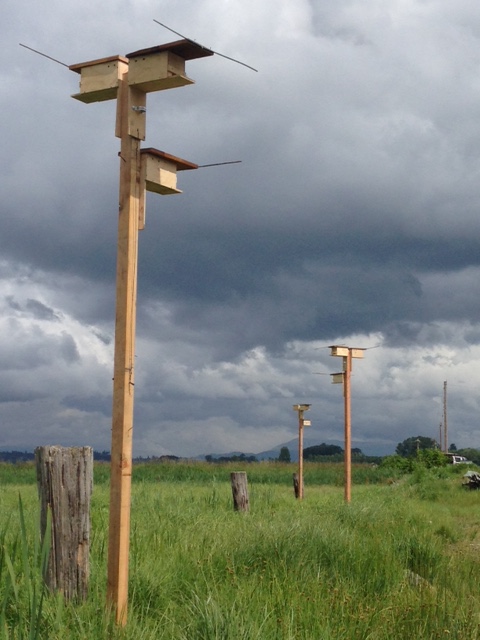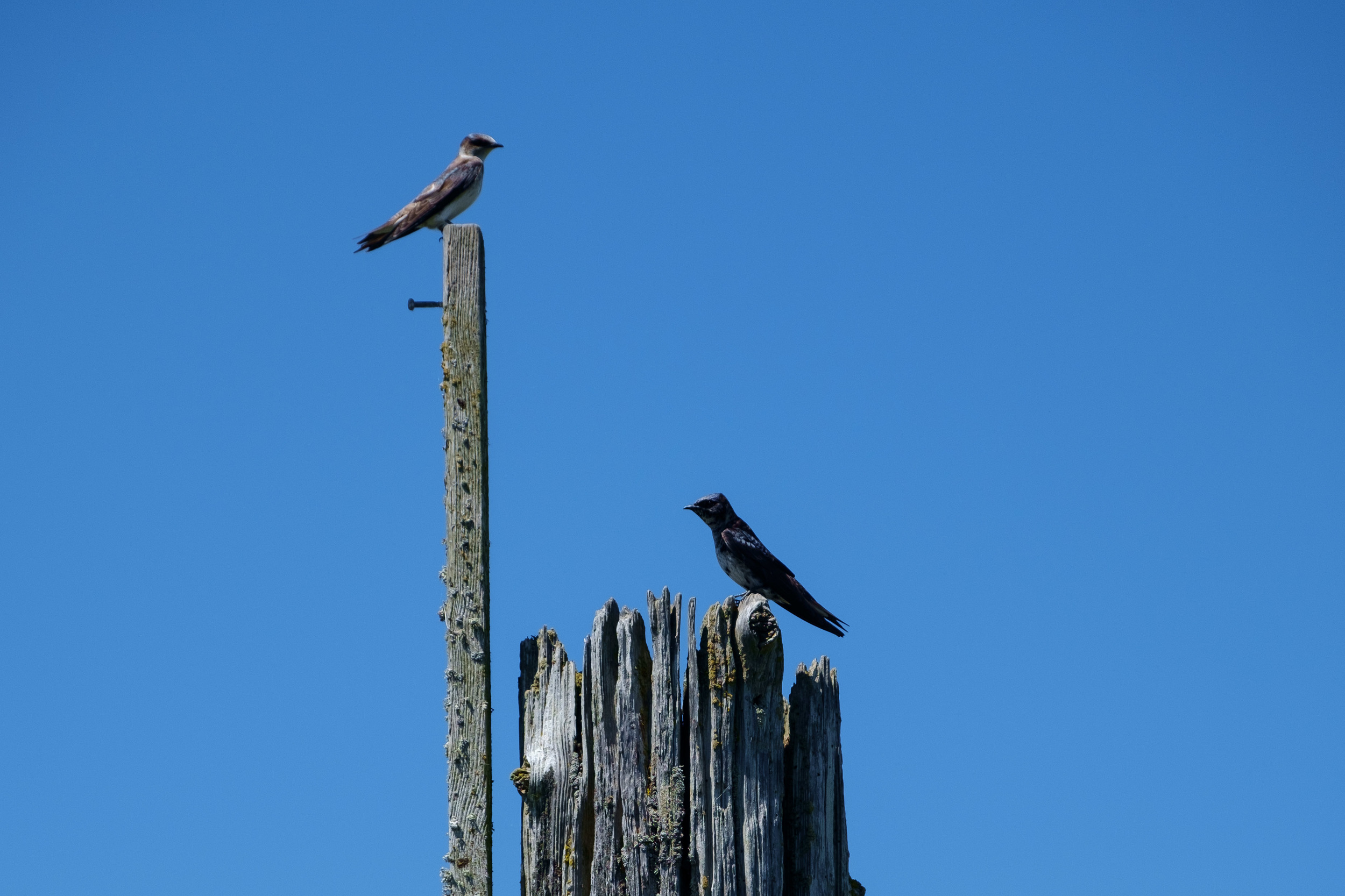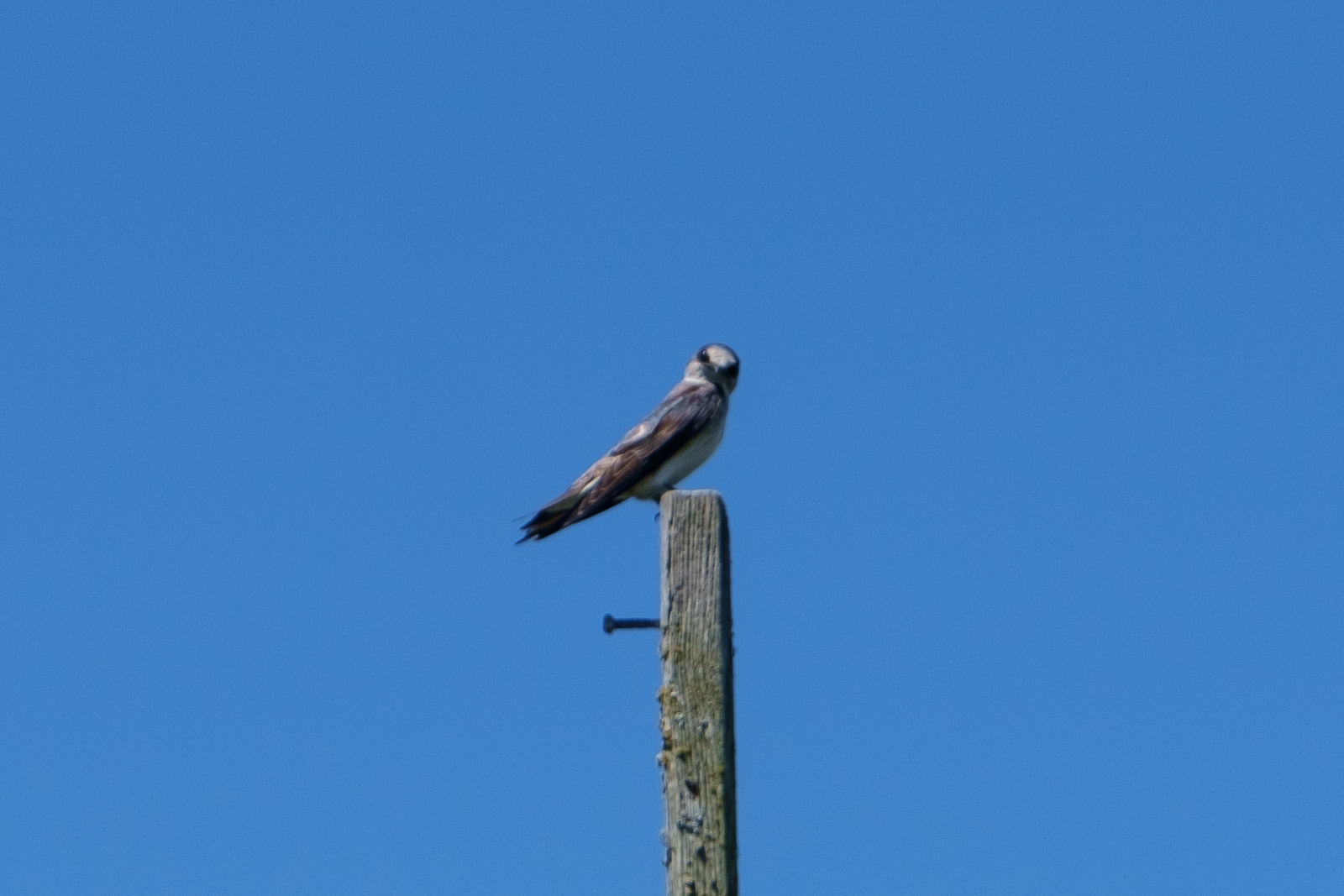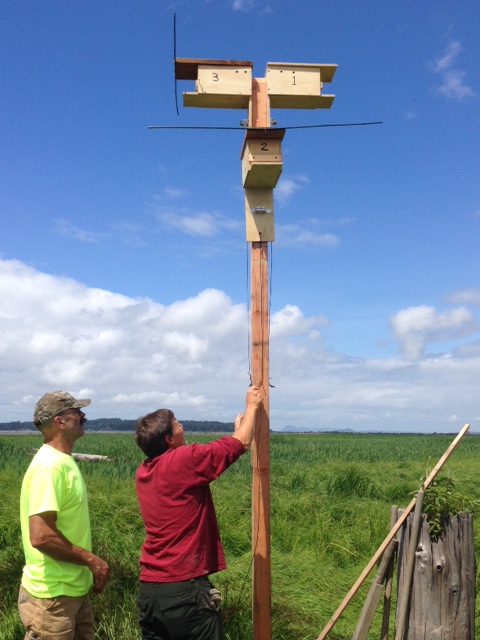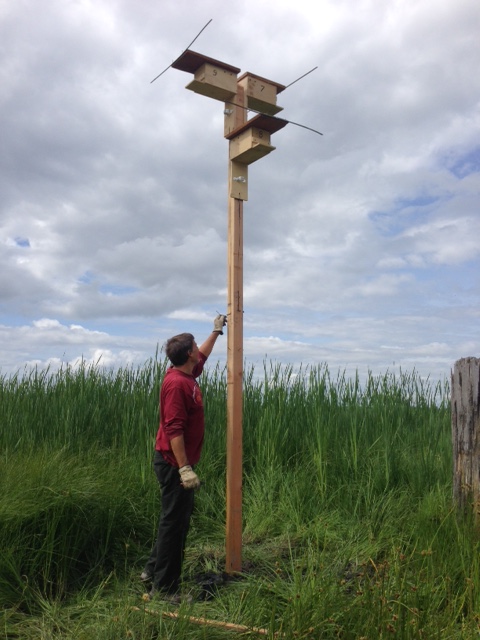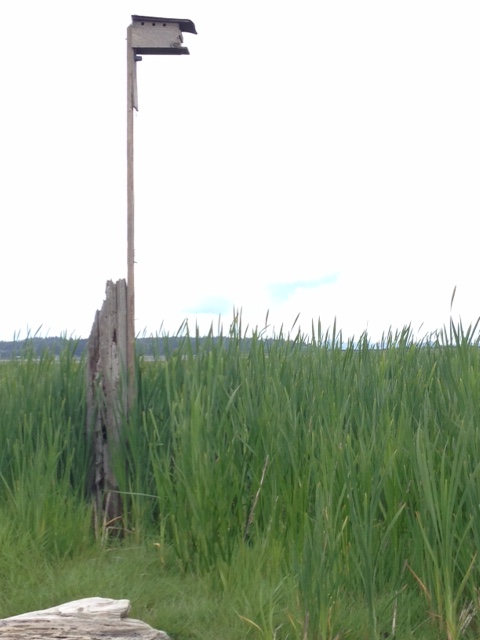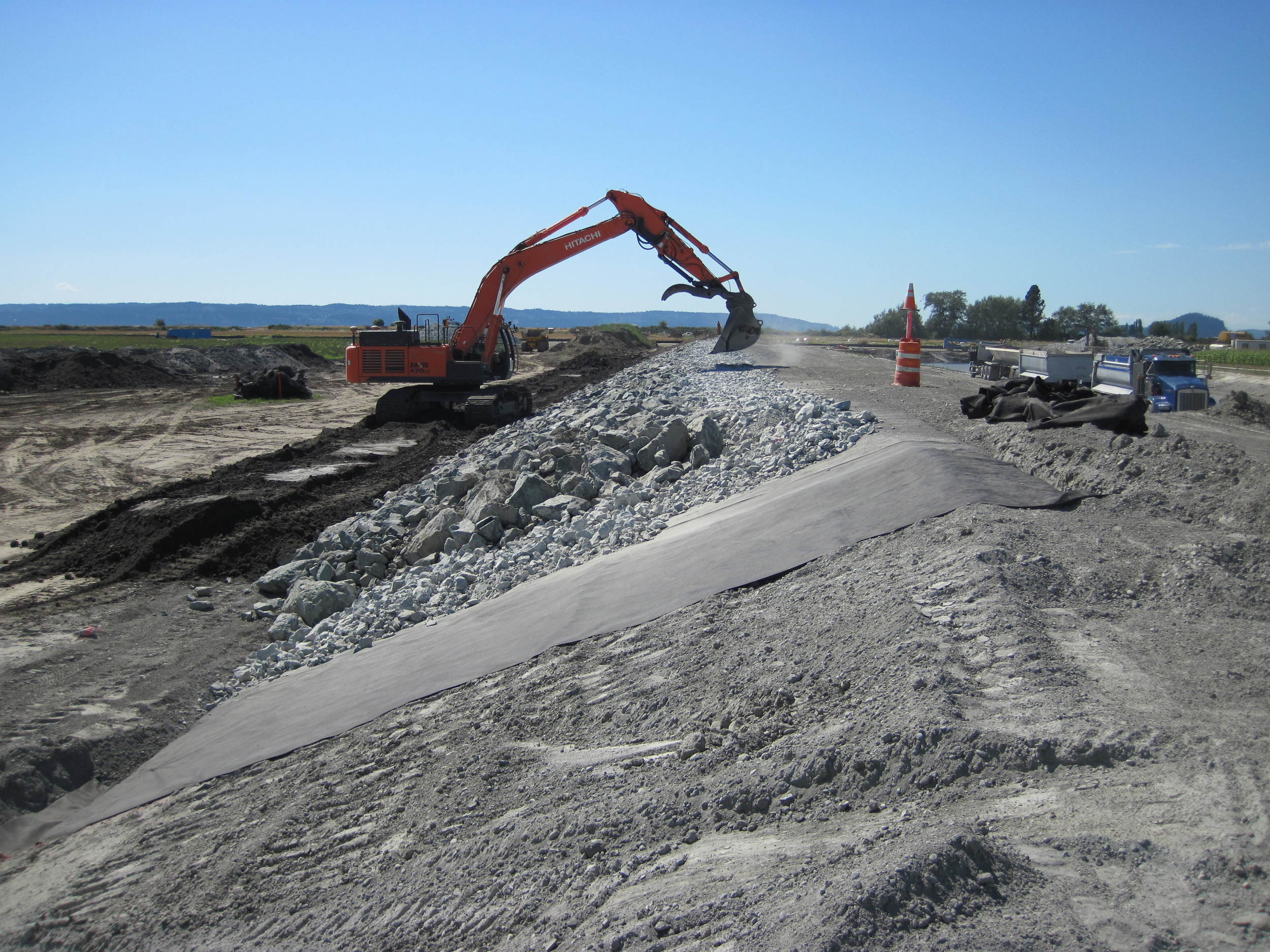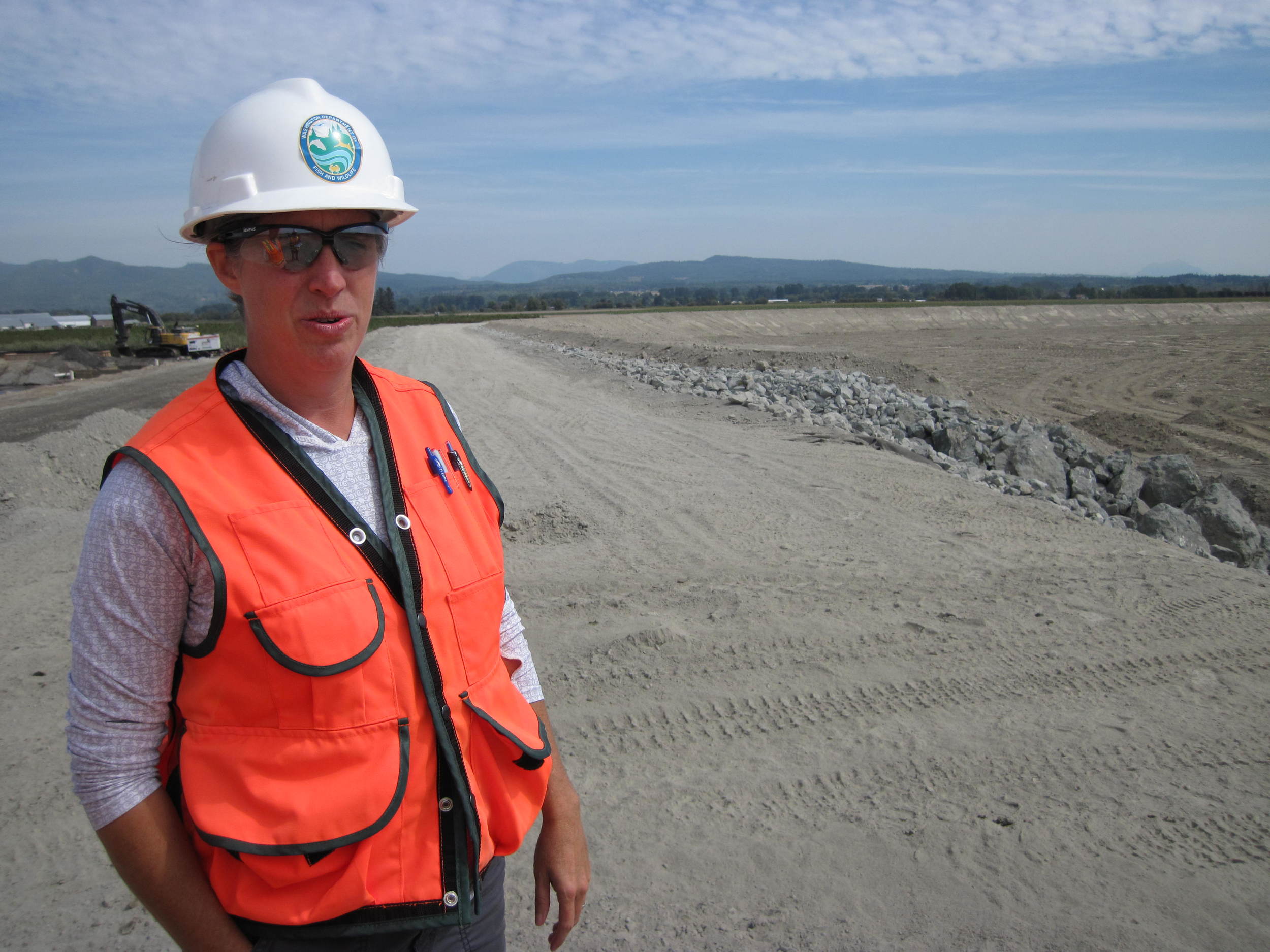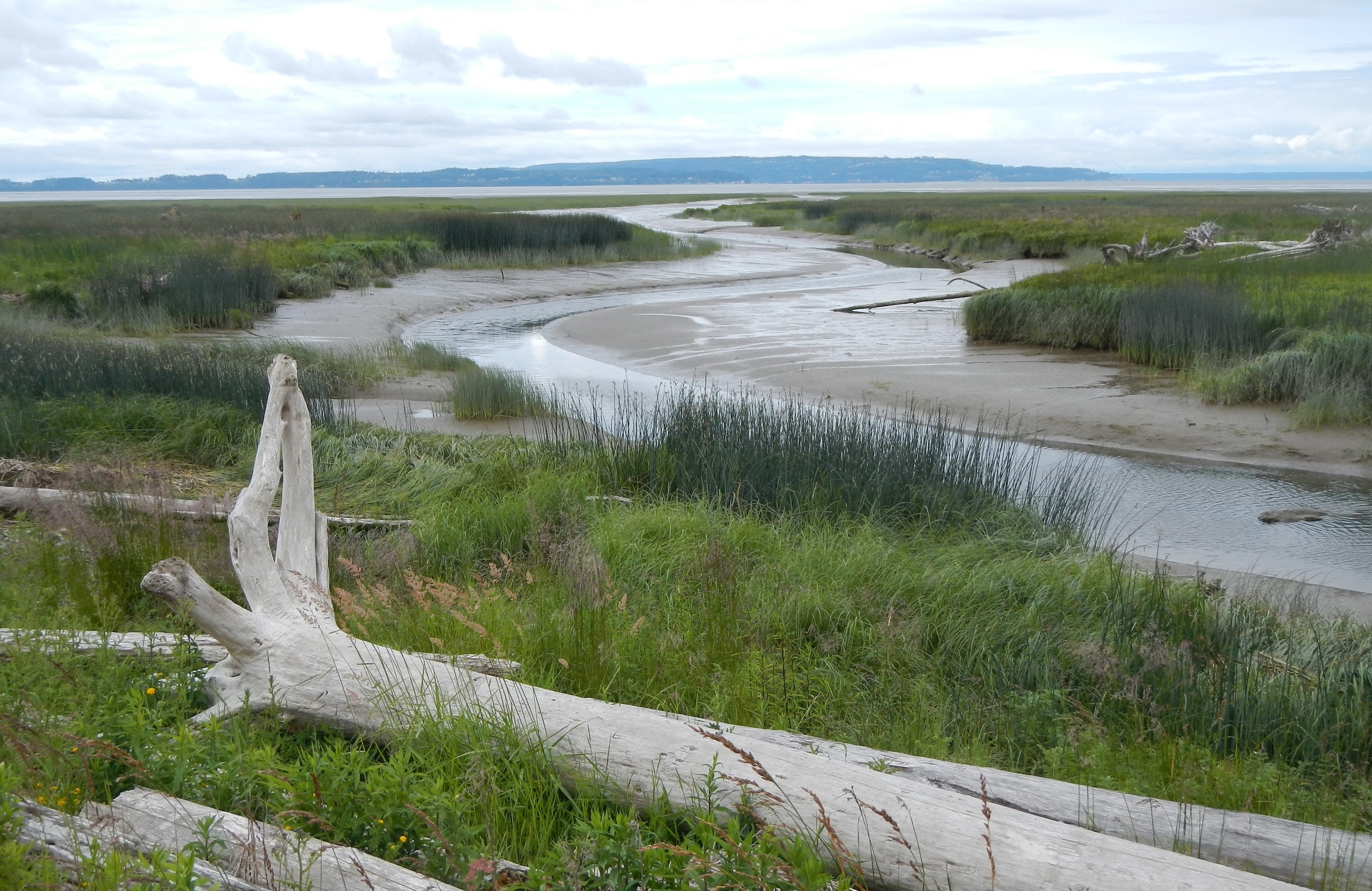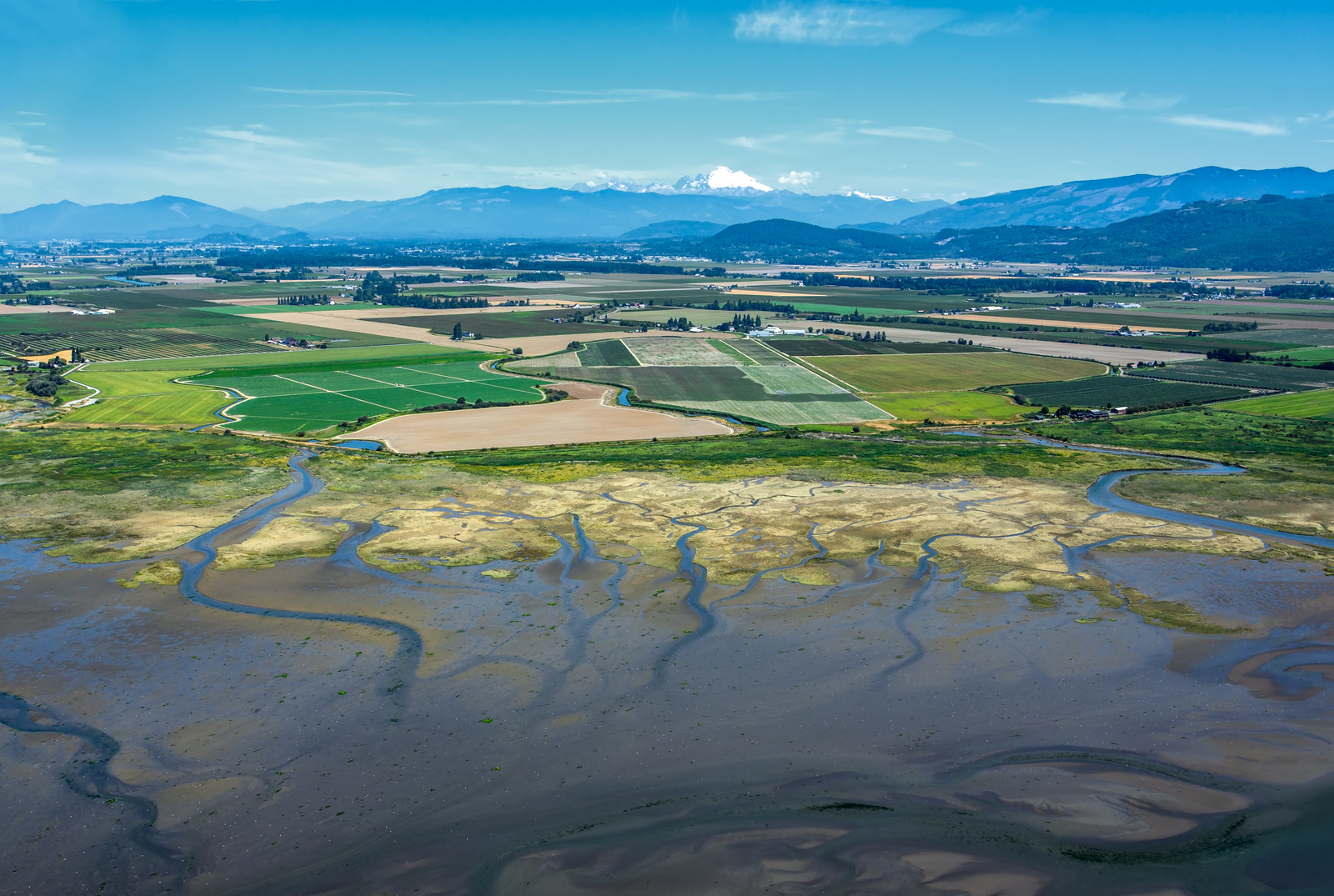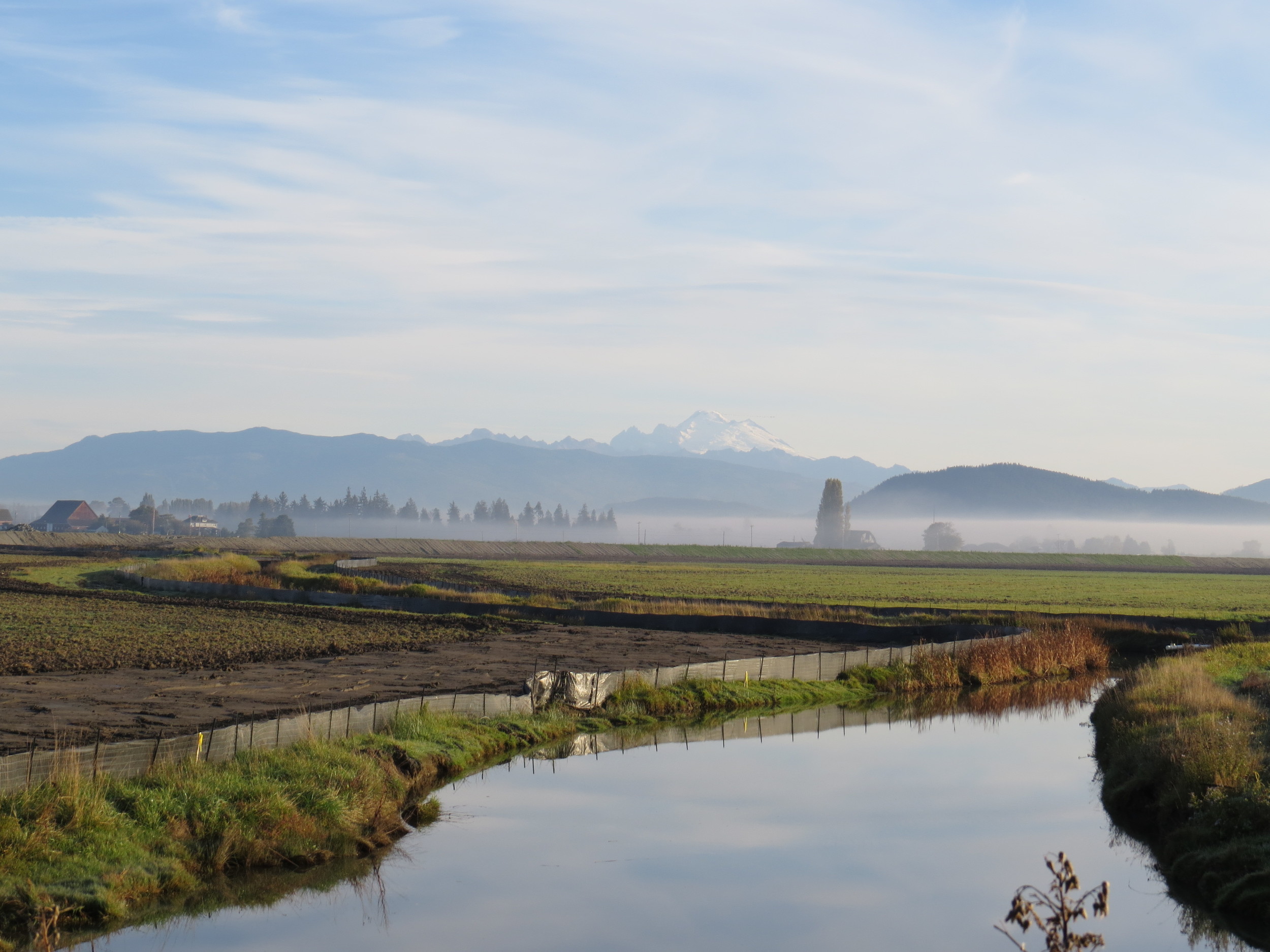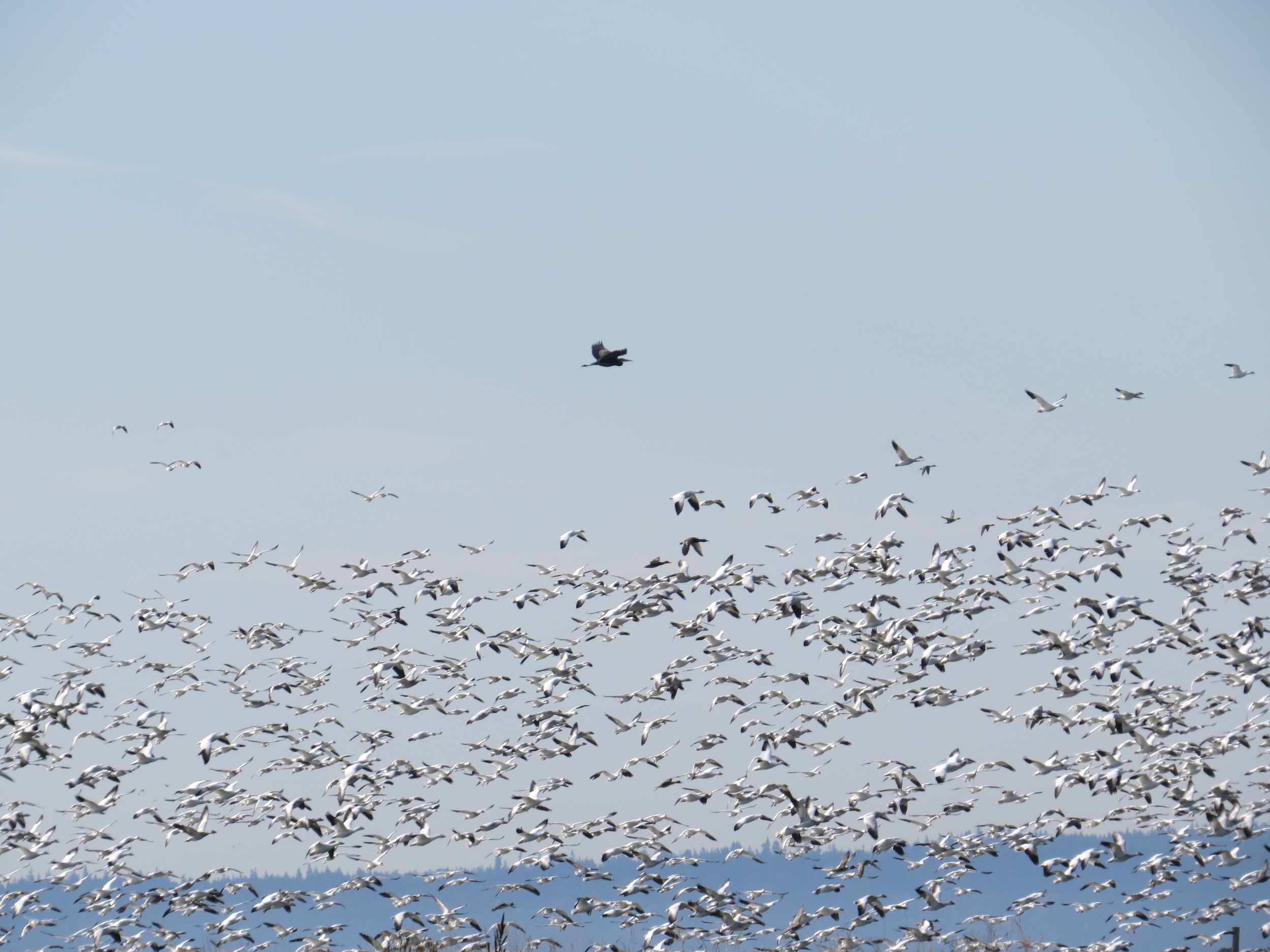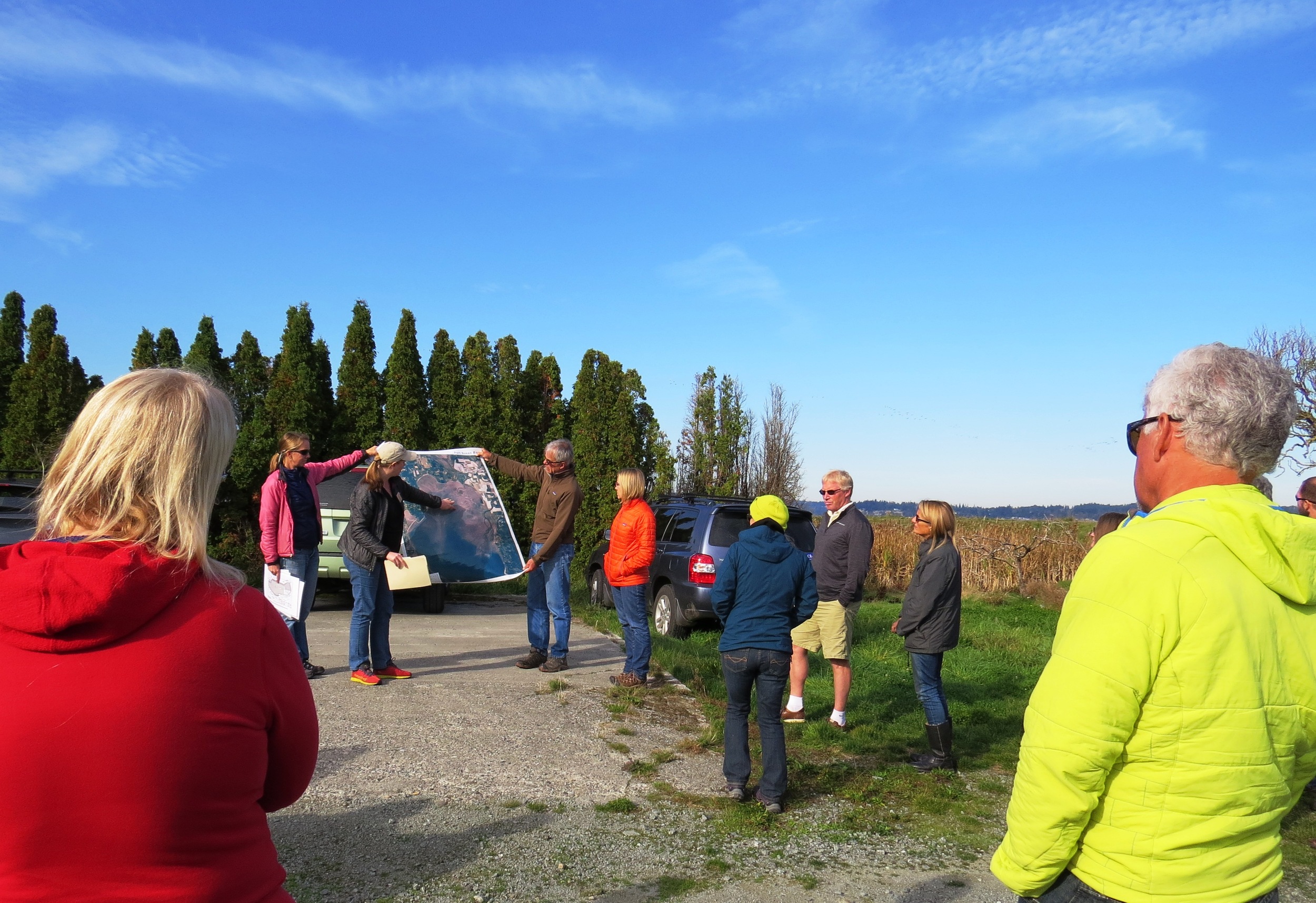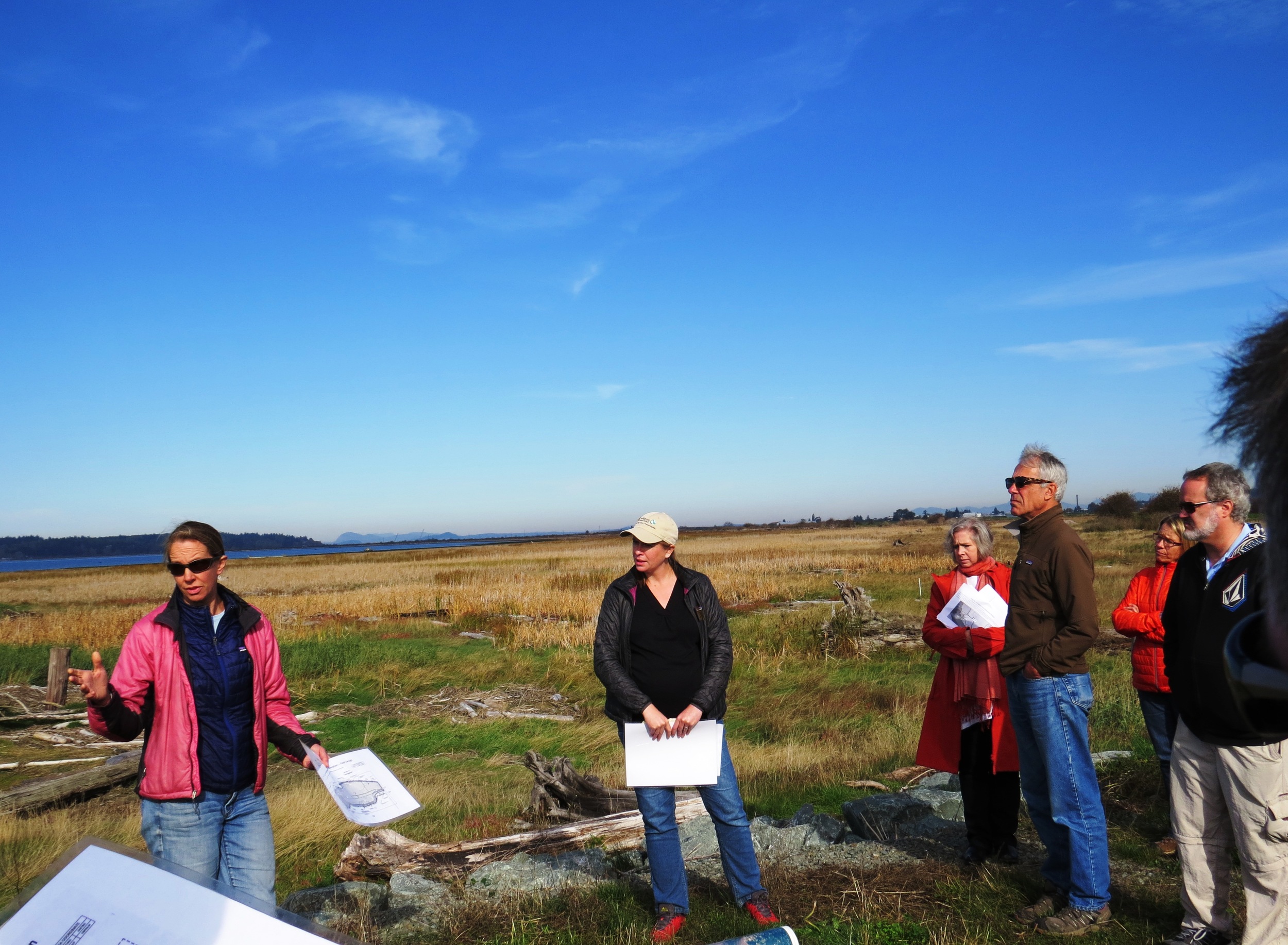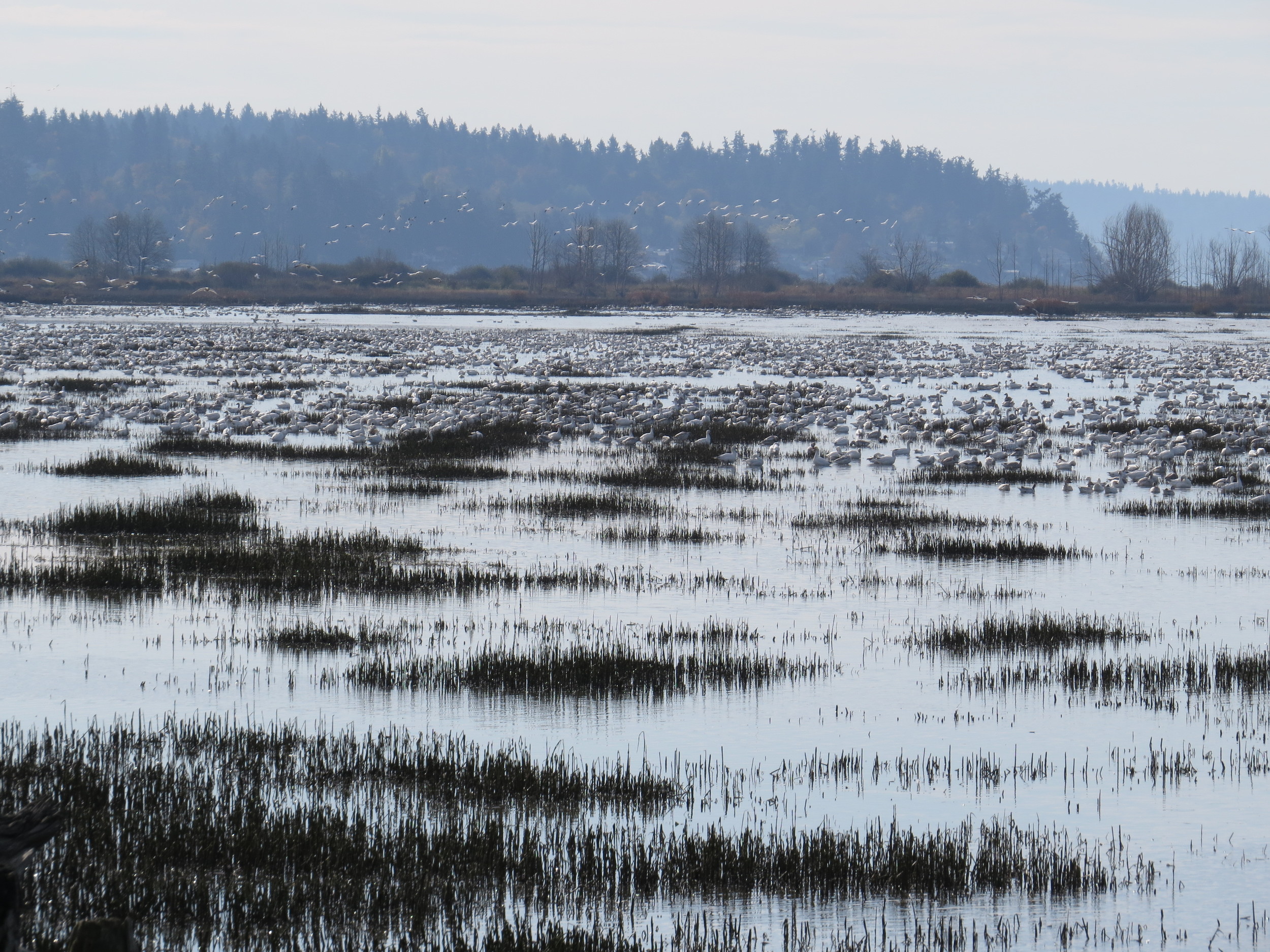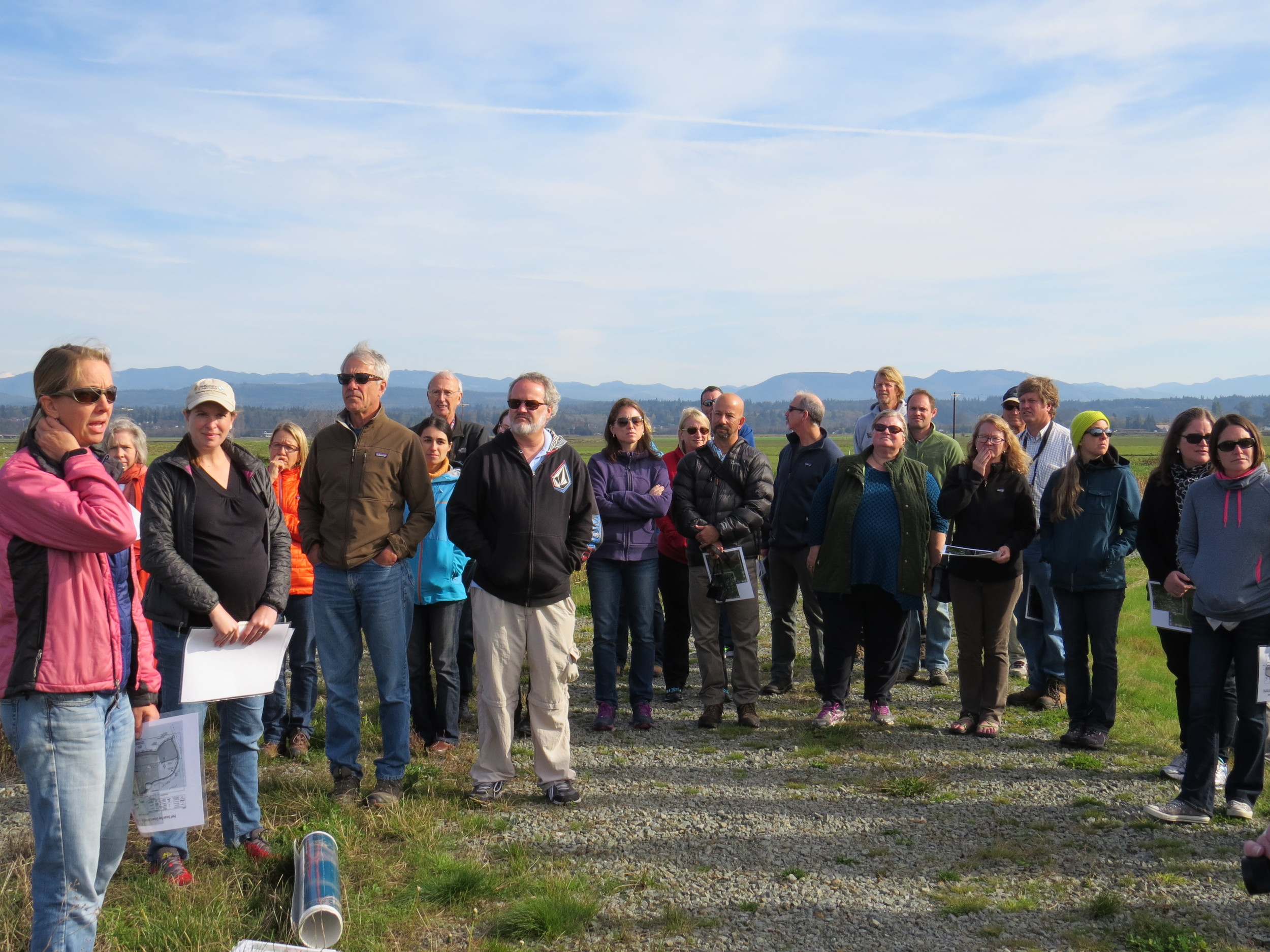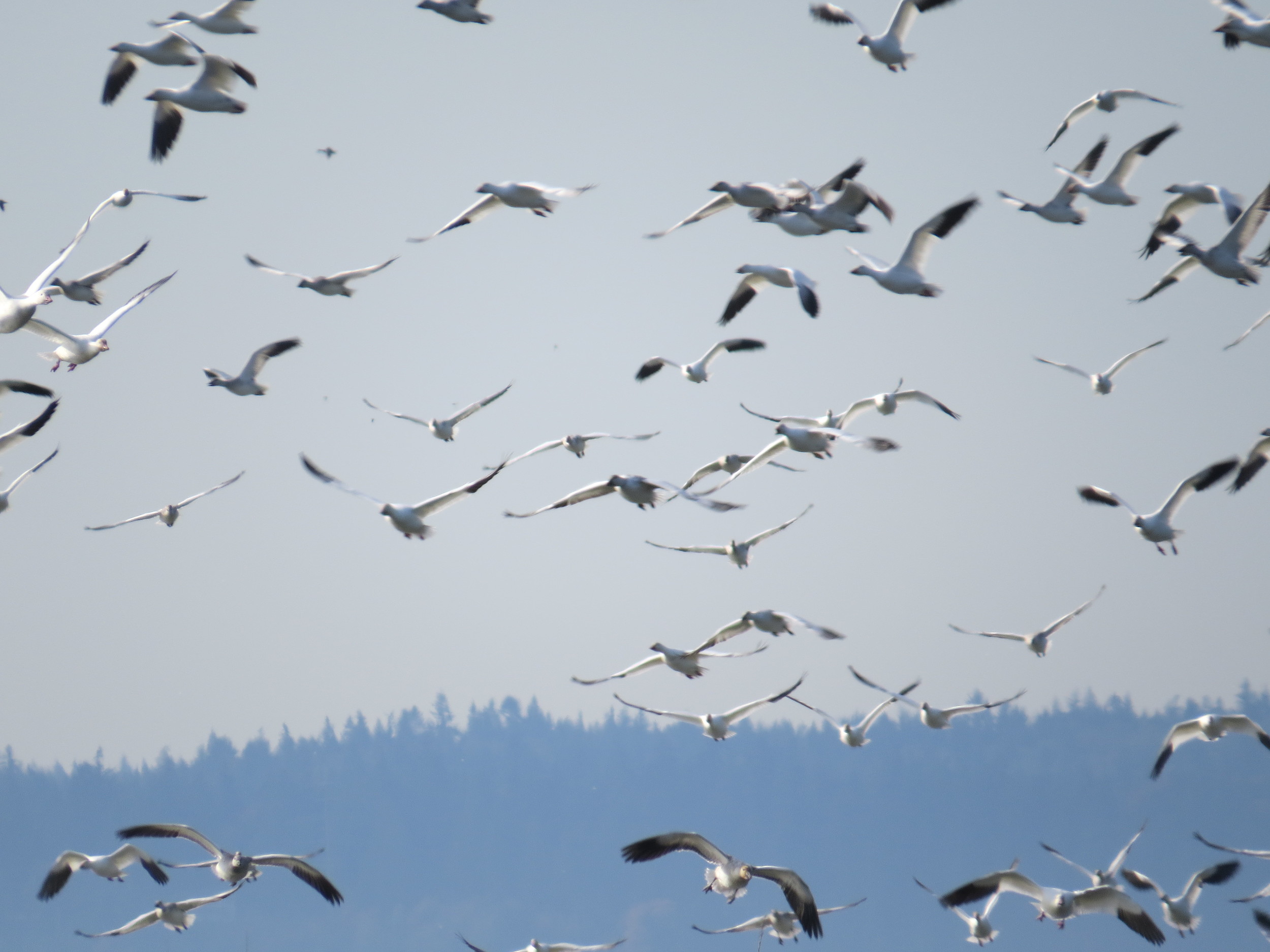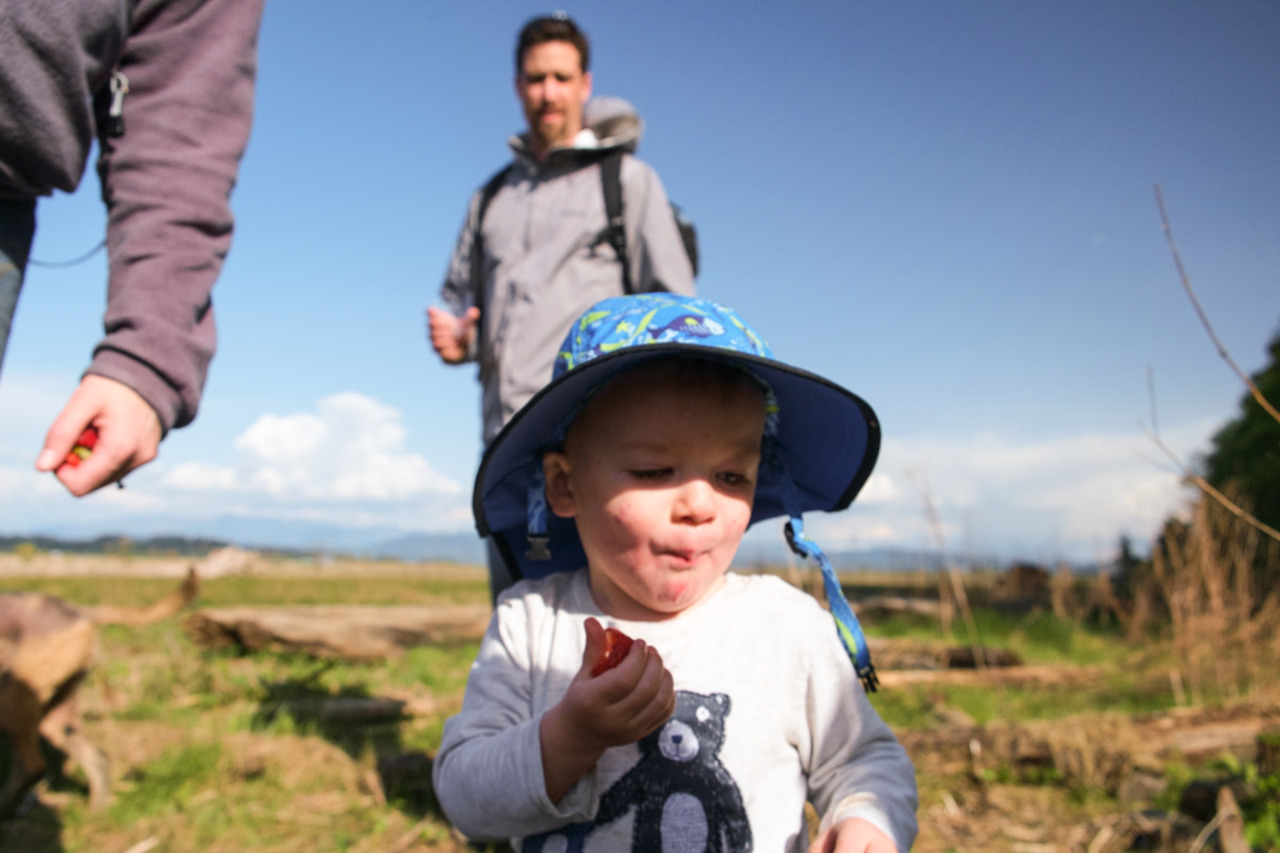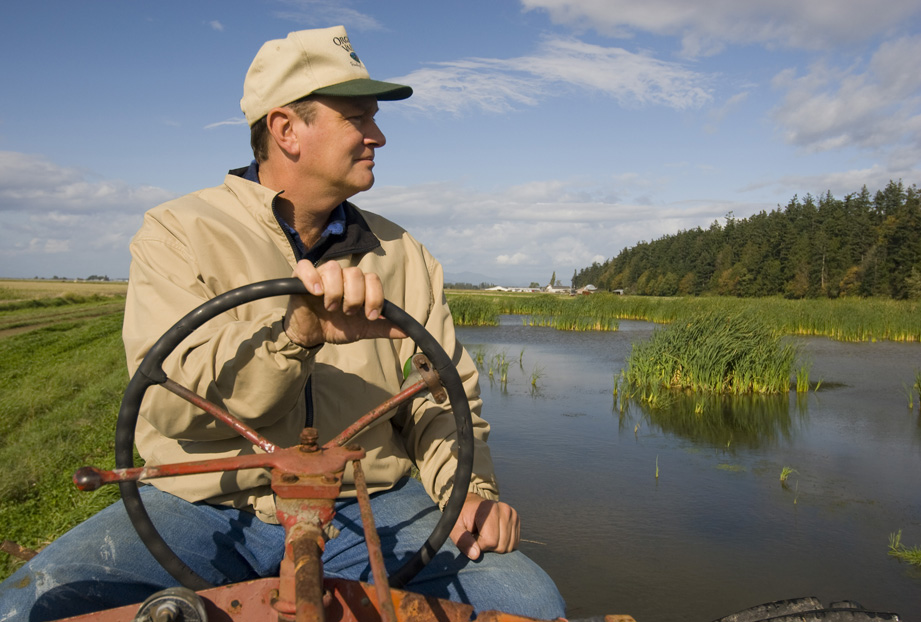Volunteer photographer Amy Hallman sent photos of winter birds in the Skagit Valley. Bald eagle, American kestrel, coot, Anna’s Hummingbird, coot, merganser
Purple Martins: New Residents at Port Susan Bay
Written Joelene Boyd, Puget Sound Stewardship Coordinator
Photographed by Julie Morse, Senior Ecologist & Skagit Audubon Group
Thanks to dedicated volunteers we now have new residents at Port Susan Bay – Purple Martins. We are really excited by this because it is the first time (at least in recent history) that Purple Martins have been seen at Port Susan Bay (PSB) and it’s all thanks to volunteers.
In mid-February volunteers came out and installed bird houses then later in May another group of volunteers from the Skagit Audubon installed some more.
I asked Mark Perry, of Skagit Audubon, some questions about Purple Martins and this project.
Why it is important to install purple martin boxes?
Purple Martins while not endangered suffer from habitat loss along the West Coast. They are "cavity nesters"...building nests in holes. Free standing Snags along bodies of water are perfect sites. On the East Coast humans have provided nesting sites since the early colonial days and the birds have adapted, accept living in close proximity and thrive. Along the West Coast the practice of providing replacement man made housing has not been as prevalent.
Is there a specific conservation target or goal in mind?
Our conservation target is simply to expand the number of nesting sites and thereby hoping to attract more nesting pairs. Our friends to the north in British Columbia have a very successful and extensive effort. Their program has grown from just a few boxes, sites and less than 100 birds to more than 50 sites, over a thousand nesting boxes and a survey population of 4500+ birds.
Why Port Susan Bay?
In Skagit, county there are only two identified Martin nesting sites. PSB offers almost perfect natural habit...wide open marsh land near body of water but lacks tree snags. Nesting boxes were removed when the dikes were removed/relocated. By utilizing the existing left over pilings and providing 3 additional nesting poles (like a snag) we hope to attract a new population of nesting pairs and reestablish a thriving colony. Martin's eat flying insects and are very social curious birds!
Why is the Skagit Audubon focusing efforts around the region to install these boxes?
Like most volunteer projects it takes a few interested and passionate folks to see a need, figure out ways to address the need and take action. Skagit Audubon has over 200 families as members, is focused on local conservation efforts and fortunately have some handy folks willing to get involved. Please check out our website www.skagitaudubon.org for more information about our chapter.
Where else can folks see these boxes?
36 boxes are up and a thriving colony exists at Ship Harbor near the Anacortes Ferry terminal. The site is easily viewed from the Ship Harbor interpretive trail.
11 boxes are up just north of the Padilla Bay interpretative center in Bayview.
9 boxes are up in English Boom.
We hope to add 30 more boxes by next season at Wiley Slough and yet to be determined sites.
Are they just birdhouses or do they have special dimensions that make purple martin houses?
A Martin Birdhouse is a bit unique. First the orientation is more horizontal than vertical. The entrance hole must be large enough for Martins but not too large to allow starlings or house sparrows to hijack the box. The box needs to be 12-15' off the ground. And since Martin's are colony nesters you need 5-7 boxes to attract them.
If someone wanted to help out in purple martin efforts what should they do/who should they contact?
If someone is just a bit handy and would like to build boxes I can share some simple plans via email. Please see the chapter President email found on the Skagit Audubon’s website skagitaudubon.org.
If folks notice Martin's already nesting at a "natural" site please let Skagit Audubon know. Or if you think there is a potential site where we could easily access and add nesting boxes that's good info too. (Using same skagitaudubon.org email).
If you would like to join our citizen science monitoring team please contact Skagit Audubon. And of course we welcome anyone who would like to join Skagit Audubon and become active members!
Thank you Mark and all of the volunteers who helped on this project!
The Fir Island Farm Project
Written by Beth Geiger
Photographs by Jenny Baker, Senior Restoration Manager
A tiny juvenile salmon swims down the Skagit River toward Puget Sound. The finger-sized fish finally arrives in the tidal reaches of the lower Skagit. It’s a big world of water and fields. Saltwater is just a splash away.
Next to the river, on Fir Island, farmers work some of the world’s most fertile agricultural land. In winter, thousands of migrating snow geese arrive in noisy white clouds. The scene is framed by snowy vistas of Mt. Baker to the east and verdant islands of Puget Sound to the west. It’s a beautiful place.
Yet for this little salmon, something critical is limited: a shallow estuary where it can grow, feed, and hide before entering the deep, exposed waters of Puget Sound. Century-old dikes built to keep floods and tides off the land to make farming the Skagit delta possible eliminated much of the estuarine marshes this young fish needs. Science tells us that restoring tidal estuaries is key to helping revive Chinook salmon populations in the Skagit watershed.
In a partnership with TNC, the Fir Island Farm project, managed by the Washington Department of Fish and Wildlife (WDFW), aims to do just what science tells us is needed for salmon, but in a collaborative way that also pays homage to the current agricultural productivity of this great place.
Most food is produced hundreds, sometimes thousands of miles from where it is consumed. That requires significant energy consumption, and it leaves communities at risk if the food supply chain becomes challenged. Preserving and enhancing farm productivity means preserving our ability to have local, sustainable fruits and vegetables now and in the future.
This is a complex system, in a critical landscape with lots of public and private interests at play – which is exactly The Nature Conservancy’s wheelhouse. No wonder this project is a balancing act. Balance estuaries for juvenile salmon with improved protection for farmland. Balance nature with community, farmers, and recreation.
The Conservancy is a critical partner in navigating this complex task. We contribute our expertise and “lessons learned” from projects that set the stage for this project, including nearby Fisher Slough. That project was managed by the Conservancy and completed in 2011.
This experience and others have taught us the importance of partners such as Consolidated Diking and Drainage District 22, which helps keep Fir Island’s farms dry. “The Conservancy was instrumental in encouraging us to talk to the Diking District early in the process,” says Jenna Friebel, Fir Island project manager for the WDFW. The Diking District, Friebel says, brought essential ideas to the project planning table, such as what type of tide gates and pumping station would work best.
In 2015 the Fir Island Farm project constructed 5,800 feet of brand new dike inland from the old dike, on a parcel of former farmland now owned by the Department of Fish and Wildlife. This summer the old dike will be removed, tides will flood in, and 131 acres will become a new tidal marsh.
By spring of 2017, tens of thousands of tiny Chinook salmon coming down the Skagit will find a safe haven, and a better future. “If the habitat is there, they can grow bigger and ready for the ocean,” says Friebel. At the same time, the future of farming here is preserved as well.
Open House for Birds
Video courtesy of Eleanor Beaton, Volunteer Videographer
Recently, 14 volunteers put the bird boxes and hollowed gourds up on wooden pilings around the Port Susan Bay Preserve. Teams of three or four spread out over the slick mud, wet grass and scattered driftwood. With few places at the site for songbirds to nest, the bird boxes could make a big difference. See how volunteers didn't let the rain stop them from making a difference in the video above!
Learn More About How You Can Volunteer
Restoration Works: Seeing Success in Skagit, Stillaguamish and Snohomish Estuaries
Photographed by Leah Kintner, Puget Sound Partnership
Recently, we went out with the Puget Sound Partnership Leadership Council and the Salmon Recovery Funding Board for an informative day to tour restoration successes throughout north Puget Sound.
The group joined Washington Department of Fish and Wildlife's Jenna Friebel and Belinda Rotton, Skagit County Commissioner Ron Wesen and Skagit Watershed Council's Richard Brocksmith to tour WDFW's Fir Island Farm estuary restoration project. We then headed to the Stillaguamish Dept of Natural Resources office for an overview of the Stillaguamish watershed by Jason Griffith (Stillaguamish Tribe) and Kit Crump (Stillaguamish Lead Entity). Afterwards, the group toured Port Susan Bay (with our Jenny Baker and Kat Morgan) and went to the Tulalip Hibulb Cultural Center for an overview of the Snohomish watershed presented by the Morgan Ruff and Kurt Nelson (Tulalip Tribe). At the end of it all we toured the recently completed Qwuloolt estuary restoration project with the Tulalip Tribe’s Morgan Ruff and Josh Meidav. It was a beautiful day touring 680 acres of estuary either restored or with restoration underway!
See photos from the day in the slideshow above.
Learn more about our work around Puget Sound.
A Friendly Farewell
Sending Kris to Kansas
Story & Photography by Julie Morse, Regional Ecologist
Working for The Nature Conservancy is a dream job. Right? I mean, especially here in Washington, and even more especially, here in the Skagit Valley. If your job entails having coffee with farmers, and taking people on a raft trip down the Skagit River to see bald eagles… does it get any better than that??
So who on earth, would trade that for a job in Kansas?
My colleague Kris just did. See he grew up in Kansas, so when the opportunity came up to do the job he loves – working for The Nature Conservancy, in the place he loves, it was a no-brainer. He says the decision was all about family and the chance for Bryson - his 2 year old son, to grow up on the family farm.
So yesterday we “celebrated” Kris’ moving on. It was a beautiful sunny day so we hiked out to Craft Island, a little gem of a rock in the middle of Skagit Bay. There were toasts, and really nice things said. And then there was a whole lot of banter about wheat products and all the whitewater he could run, in Kansas.
As a going away present, one of the local farmers gave Kris a model International tractor, an exact replica of his first tractor on his potato farm. I don’t know how many environmentalist get model tractors as their going away present, but Kris did. It speaks volumes to the relationships he built here, and his incredible skill and finesse in finding common ground, and getting people to work together.
But honestly, the day didn’t feel like much of a celebration to me. It felt like we were losing a family member. Like we just lost the family dog.
The thing about working for The Nature Conservancy is we are all fiercely dedicated and passionate about the work we do, of course. But it made me realize a dream job is not about the work you do, it’s about having fun doing it.
Over the last 7 years we’ve had so much fun together – from canon-balling in Fisher Slough, to donut eating competitions during painfully long meetings, to annual Ski to Sea races (by the way, still waiting for you to man up and beat me in the ski leg Kris). In our small Mount Vernon office we are friends first, and colleagues second.
So here’s to Kris (the tall guy in the photo) and Kansas. We’ll miss you.
Farms, Fish & Flood Initiative
Where are you working on this project?
In the Skagit Delta located in North Puget Sound. The Skagit is the largest river in Puget Sound and the Skagit Valley is home to the largest agricultural industry in Puget Sound. We’re working with a group of organizations to come together with a commitment to achieve the Puget Sound Salmon Recovery goals of estuary restoration and resource land protection through the formation of the Farms, Fish and Floods Initiative (3FI).
Which organizations are helping with this initiative?
To date, the 3FI partners (National Oceanic and Atmospheric Association (NOAA), Skagit Conservation District, Skagit County, Skagit County Dike and Drainage Partnership, Skagitonians to Preserve Farmland, The Nature Conservancy, Washington Department of Fish and Wildlife, and Western Washington Agricultural Association) have signed a Memorandum of Understanding to work in the spirit of collaboration to achieve the 3FI mission: To create and advance mutually beneficial strategies that support the long-term viability of agriculture and salmon while reducing the risks of destructive floods.
There are a lot of great people and organizations involved in this project.
Tell us a little more about why this project is so important to learn about
The 3FI is the first landscape scale effort in the Skagit Delta. It’s where the conservation and agricultural interests have agreed to come together to bring about breakthroughs in estuary restoration, flood risk reduction and farmland protection in a way that supports multiple community interests. This is not only great for people but also important for the future of the Skagit Valley in terms of flood protection, viability of agriculture as well as salmon recovery. By approaching our common goals at a landscape scale, the 3FI members will be able to work with a broad base of stakeholders and trustees to identify actions needed to achieve our goals.
Have you done any projects like this before?
After working together on restoration projects and agreements, such as the Fisher Slough Project, Drainage Fish Initiative, Tidegate Fish Initiative, and Guidance on WDFW’s Vision for Conservation and Land Acquisition for the Skagit Delta, we now know what it takes to get projects done, which is reflected in the core values developed by the 3FI member organizations.
See examples at this video link for projects The Nature Conservancy has worked on in the Skagit Valley and Stillaguamish watershed that are similar to the issues we are working to solve with our partners in the Skagit Delta through the Farms Fish and Floods Initiative.
Under Construction: Restoring Estuary Habitat in the Puget Sound from HabitatSeven on Vimeo.







